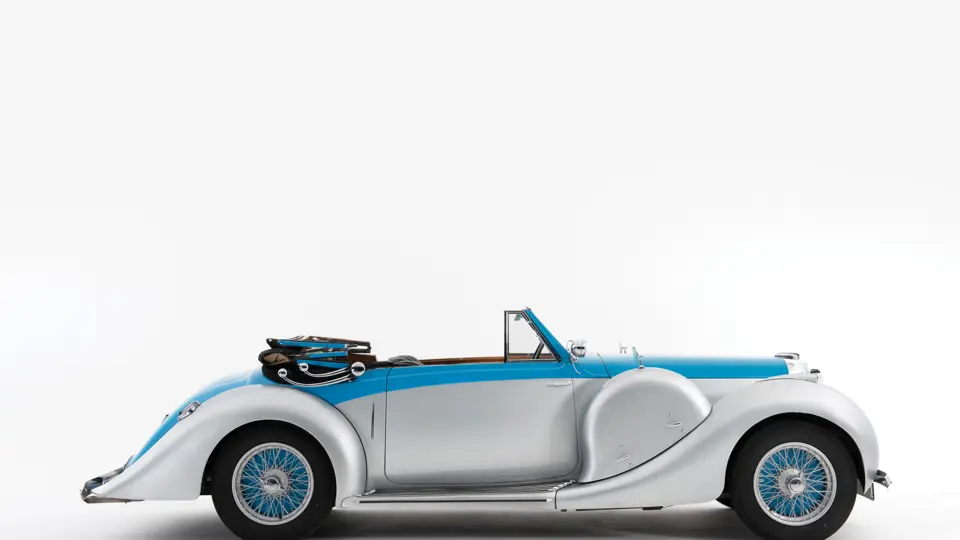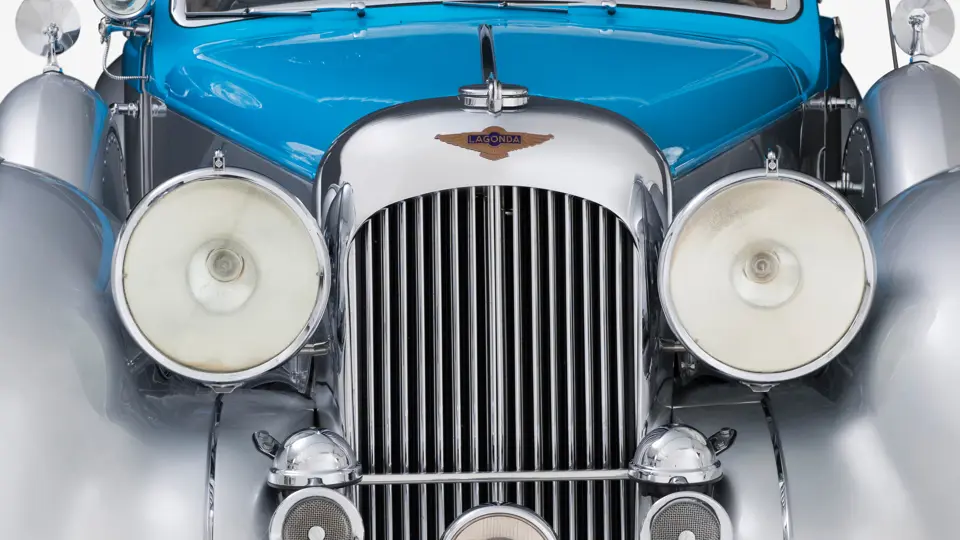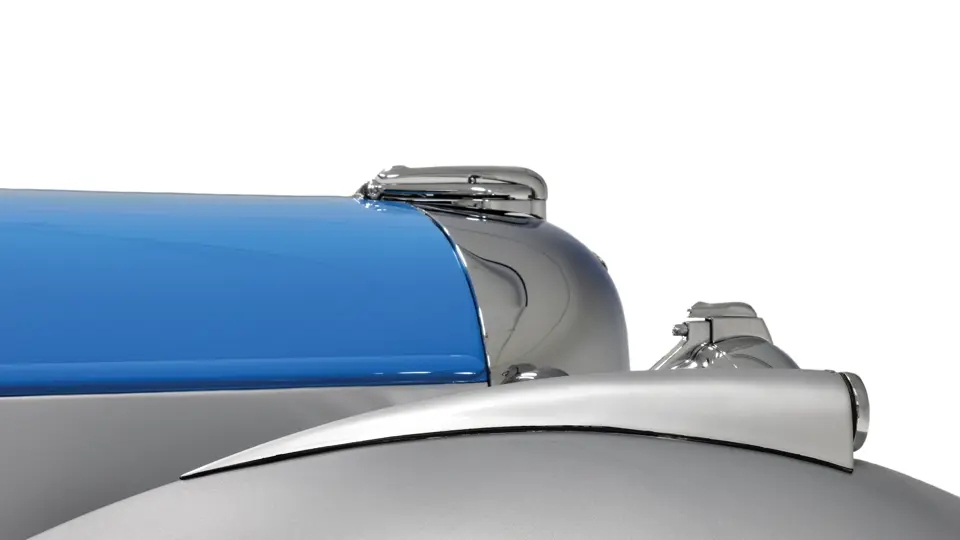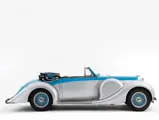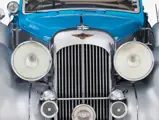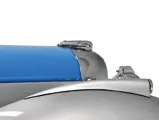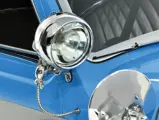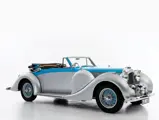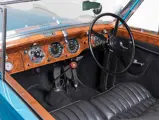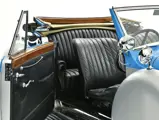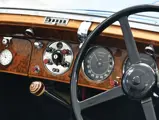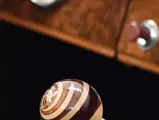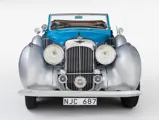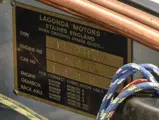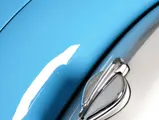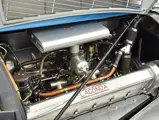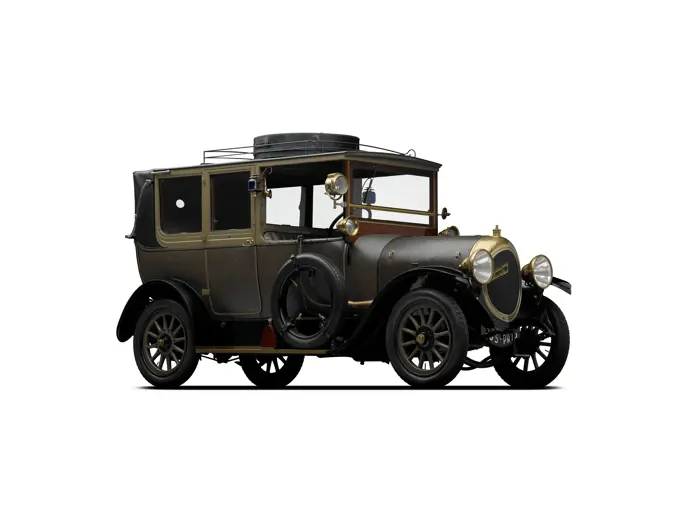
1939 Lagonda V-12 Drophead Coupé
{{lr.item.text}}
€280,000 EUR | Sold
{{bidding.lot.reserveStatusFormatted}}
- W.O. Bentley’s engineering masterpiece
- Exceptionally elegant styling
- Long-term family ownership
- L’opera d’arte tecnica di W.O. Bentley
- Uno stile eccezionalmente elegante
- Proprietà di una sola famiglia per lungo tempo
Est. 195 bhp, 4,480 cc SOHC V-12 engine, four-speed manual transmission, torsion bar independent front suspension, live rear axle with semi-elliptical leaf springs, and four-wheel hydraulic drum brakes. Wheelbase: 3,150 mm
Circa 195 cv, 4.480 cc, motore V-12 monoalbero a camme in testa, cambio a 4 rapporti, sospensioni anteriori a ruote indipendenti con barre di torsione, assale oscillante posteriore con balestre semi ellittiche, quattro freni a tamburo ad azionamento idraulico. Passo: 3.150 mm
Rare is the opportunity for an engineer to express all of his talents with few limitations, but W.O. Bentley was given the chance to do just that when he arrived at British automaker Lagonda in the late 1930s. He put together a V-12 that was composed of Cromidium, Dralumin, steel, aluminium, and phosphor-bronze, and every single component was tested so that it would perform flawlessly under any operating condition. It sat on a chassis that had independent front suspension and four-wheel hydraulic brakes, which greatly improved handling and stopping power.
A Lagonda V-12 with a closed body once covered a distance of 101.5 miles in one hour, which is an impressive figure for the time, and it is even more impressive when one considers that they had to stop and change a flat tyre midway. Two special-bodied V-12s finished 3rd and 4th overall (1st and 2nd in class) at Le Mans. The performance of the Lagonda V-12 astonished the world, and today, it is arguably the most desirable British grand tourer of its era, especially those in the factory’s beautiful, streamlined drophead coupé bodywork.
According to the Lagonda Club of Great Britain, the V-12 Drophead Coupé offered here was delivered new to James Scott and Son, of Dundee. It was finished in Gunmetal and fitted with an optional rear bumper. The Lagonda remained in the UK until 1964, at which point it was exported to Chicago, Illinois. By 1976, the V-12 had made its way to the western U.S., under the tenure of Worth Simpson of Craig, Colorado. It returned to the UK sometime thereafter, and in 1987, it was acquired by its current owner’s father—for the sum of £18,000—from the former firm of Porters of London. The Lagonda was destined for Sweden with its new custodian, and there it would remain until most recently.
Under its long-term family ownership, the Lagonda was part of a small collection of vintage cars, which included several W.O. Bentleys. The car remained as-acquired for some years, until the owner undertook a restoration with Renoverad hos Rohdins Automobil Service in Sweden, which took some 6,000 hours to complete and was finished in 2008. Since completion, the car has been seldom used but continuously registered and stored in a purpose-built heated garage. Currently, the car presents in excellent overall condition, and it is offered today from its long-time owner’s proud family to a new caretaker.
This is a sumptuous example of one of the finest British automobiles of its decade, and it is arguably the final masterpiece of one of the country’s most famous engineers.
E’ raro, per un ingegnere, poter esprimere tutto il suo talento senza vincoli e limitazioni ma, questa possibilità è stata offerta a W.O. Bentley quando è entrato a far parte della fabbrica inglese di automobili Lagonda, alla fine degli anni 30. E’ lì che è riuscito a realizzare un motore V-12 utilizzando composti metallici di altissimo livello come il Chromidium, Duralluminio, acciaio, alluminio e bronzo fosforoso, con ogni singolo componente testato per resistere senza cedimenti a qualsiasi condizione di impiego. Inoltre, poggiava su un telaio con le sospensioni anteriori a ruote indipendenti e quattro freni a tamburo ad azionamento idraulico, il che migliorava in modo notevole sia il comportamento stradale sia la rapidità di frenata.
Una Lagonda V-12, con carrozzeria chiusa, una volta ha coperto la distanza di 101,5 miglia (163 chilometri) in un’ora, un risultato stupefacente per l’epoca, ancora più incredibile considerando che la macchina si era dovuta fermare lungo il percorso di prova per sostituire un pneumatico bucato. Due V-12, dotate di carrozzeria speciale aperta, sono finite terze e quarte assolute (prime e seconde di classe) a Le Mans. Le prestazioni della Lagonda V-12 hanno stupito il mondo e, ancora oggi, rimane una delle più desiderabili vetture inglesi da gran turismo del periodo, soprattutto quando “vestita” con la carrozzeria aerodinamica cabriolet realizzata dalla stessa Lagonda.
Secondo quanto riportato dal Lagonda Club di Gran Bretagna, la V-12 Drophead Coupé proposta qui, fu consegnata nuova alla James Scott and Son, di Dundee. Dipinta in colore Gunmetal dotata di un paraurto posteriore che era un’optional, la Lagonda è rimasta in Gran Bretagna fino al 1964, prima di essere esportata a Chicago, Illinois. Nel 1976 questa Lagonda V-12 fu la proprietà di Worth Simpson da Craig, Colorado. Rientrata in Inghilterra qualche tempo dopo, nel 1987 è stata acquistata dal padre dell’attuale proprietario—per la somma di £ 18,000—presso l’allora attiva ditta Porters di Londra. La Lagonda, con il suo nuovo custode, sarebbe stata destinata a finire in Svezia, ed è esattamente lì che è rimasta fino a pochissimo tempo fa.
Durante questi molti anni di un’unica proprietà, la Lagonda ha fatto parte di una piccola collezione di auto d’epoca, tra cui numerose Bentley del periodo di W.O. La macchina è rimasta nello stato in cui si trovava al momento dell’acquisto per qualche anno, prima di venire sottoposta ad un restauro completo presso lo specialista svedese Renoverad hos Rohdins Automobil Service, che ha impiegato qualcosa come 6.000 ore per finire il progetto, terminato nel 2008. Dalla fine del restauro, la macchina è stata usata raramente, pur rimanendo sempre targata e pronta a circolare, e conservata all’interno di un garage riscaldato costruito appositamente per questo scopo. Attualmente la macchina si presenta in eccellenti condizioni generali, e viene offerta dalla famiglia dell’orgoglioso proprietario che l’ha avuta per così tanti anni, ad un nuovo custode.
Questo è un meraviglioso esempio di una delle migliori autovetture inglesi del periodo, ed è indiscutibilmente, l’opera finale di uno degli ingegneri inglesi più famosi.


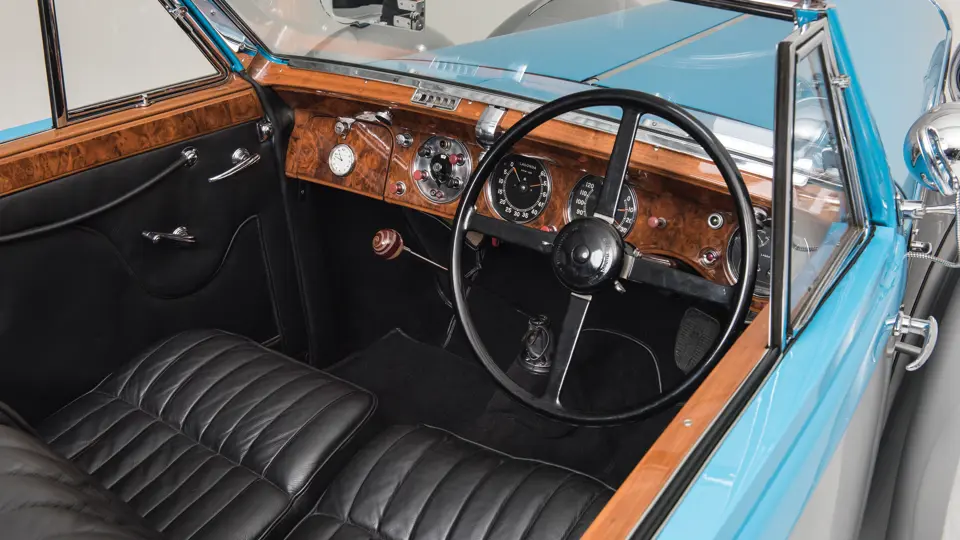




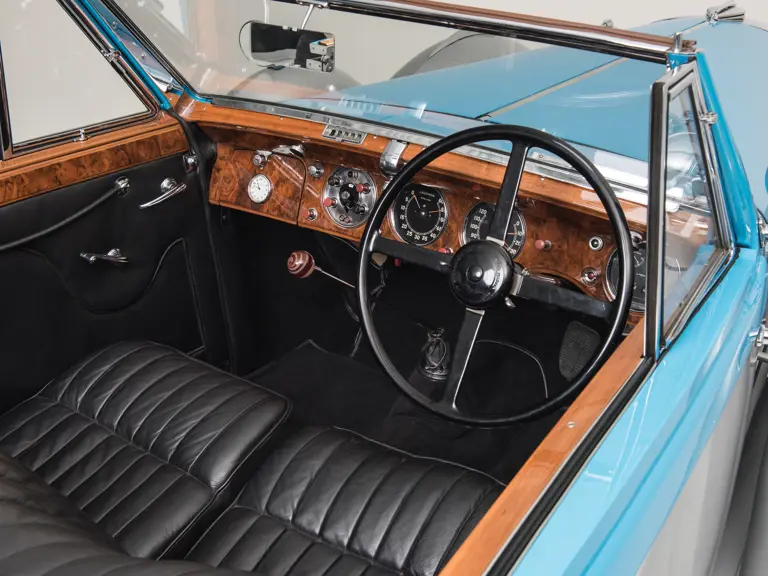

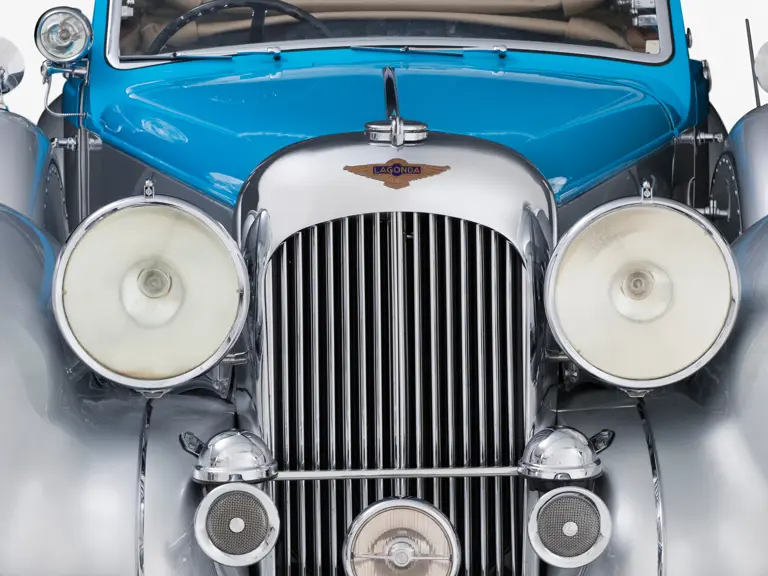
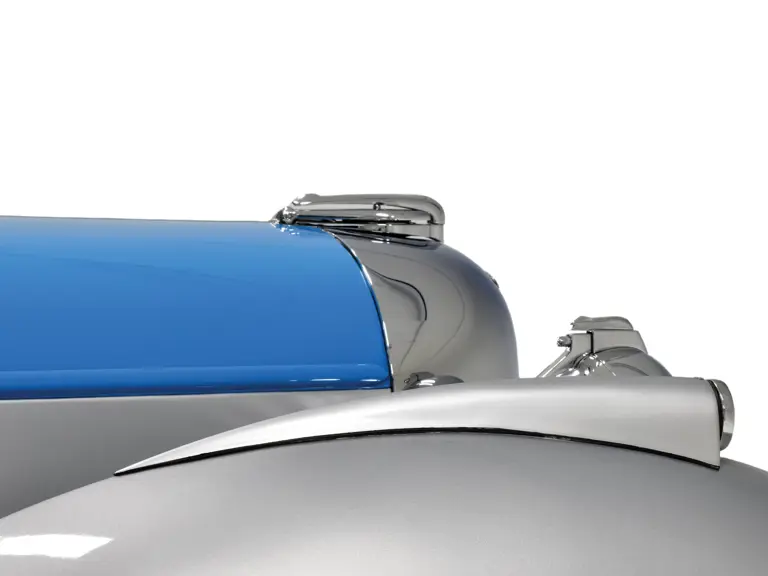

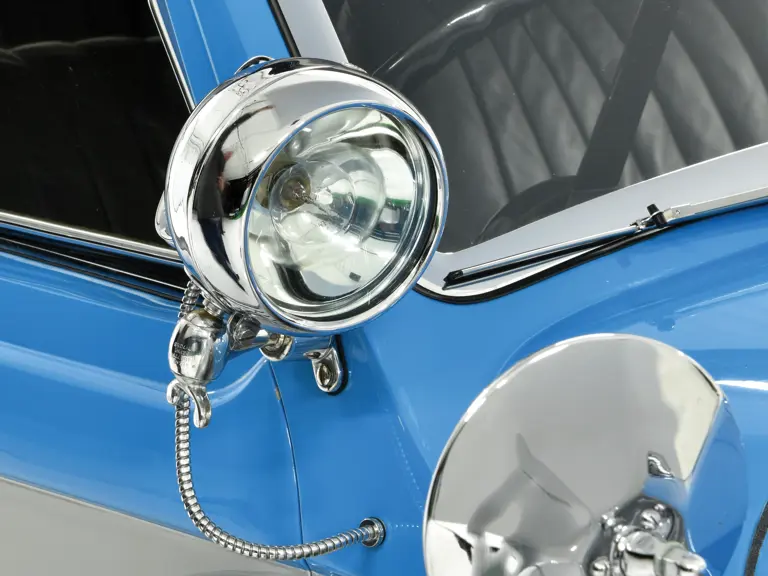
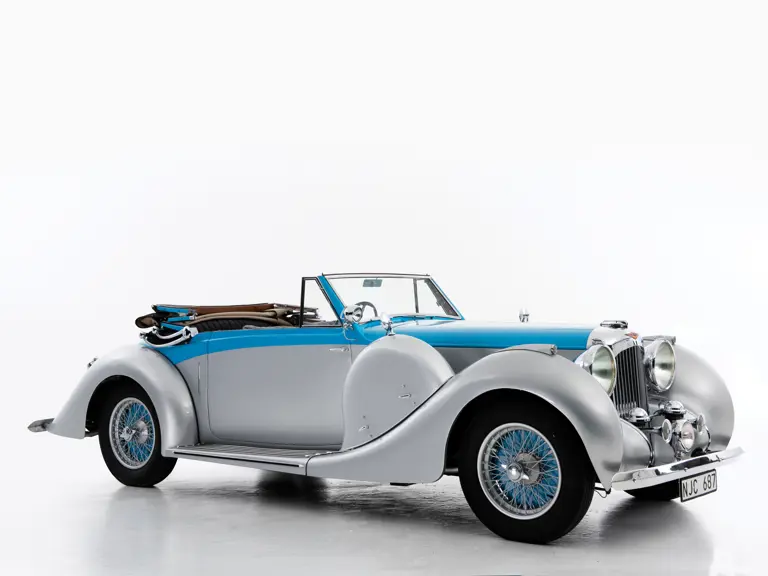
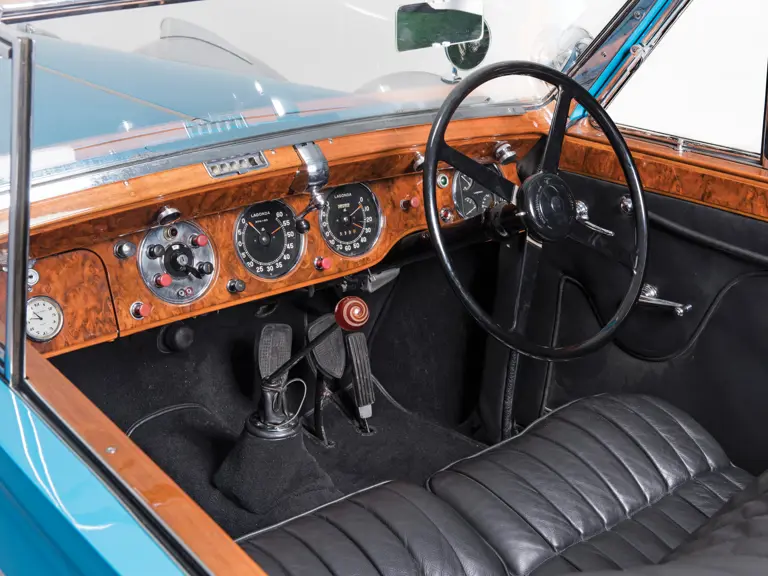

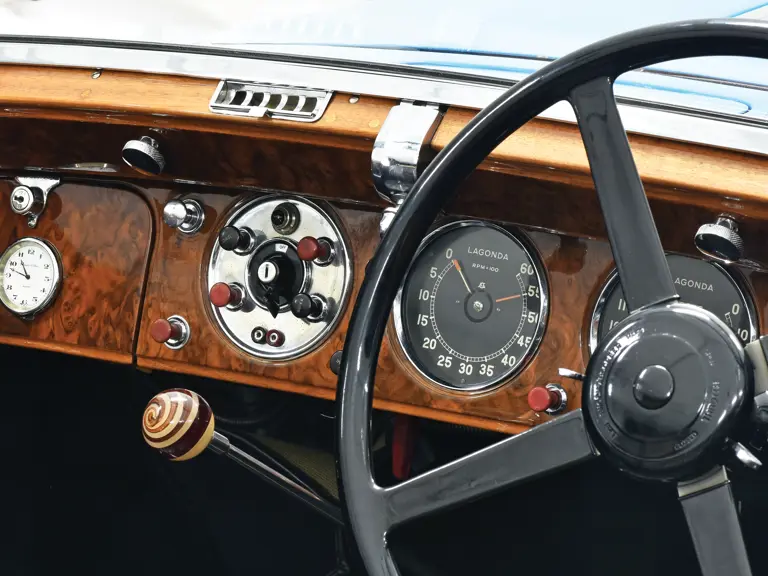

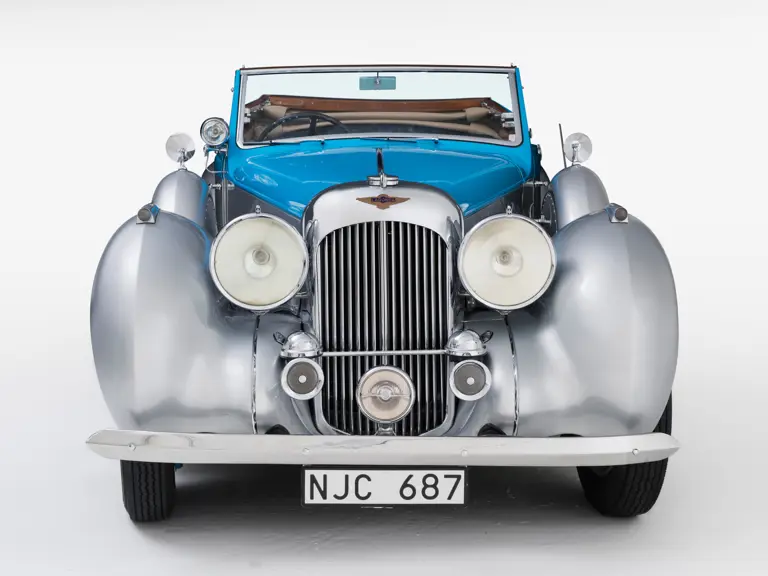
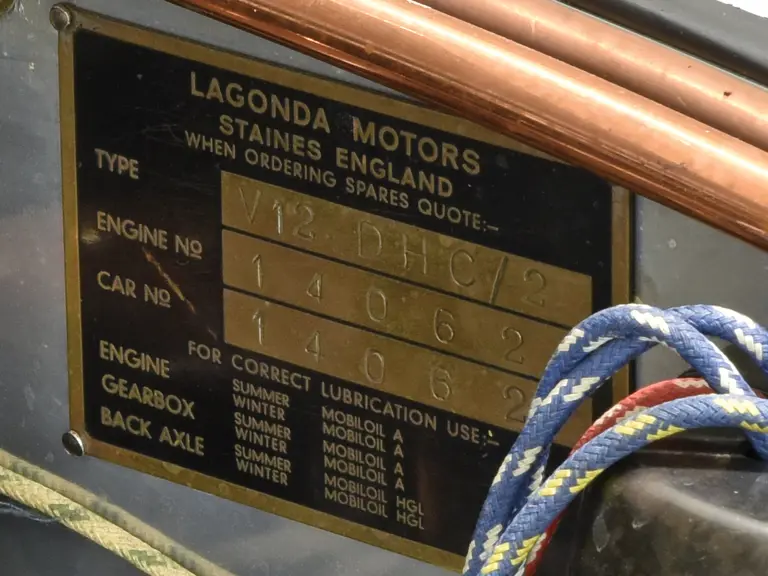

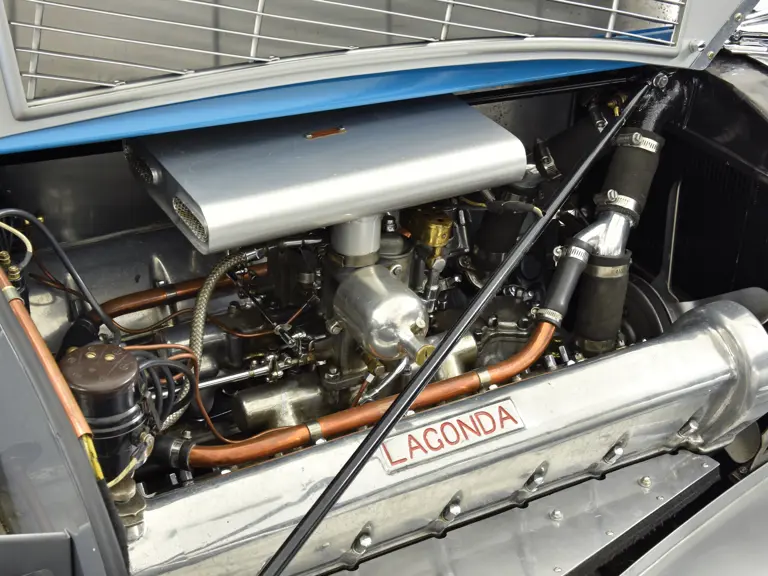
 | Cernobbio, Italy
| Cernobbio, Italy
